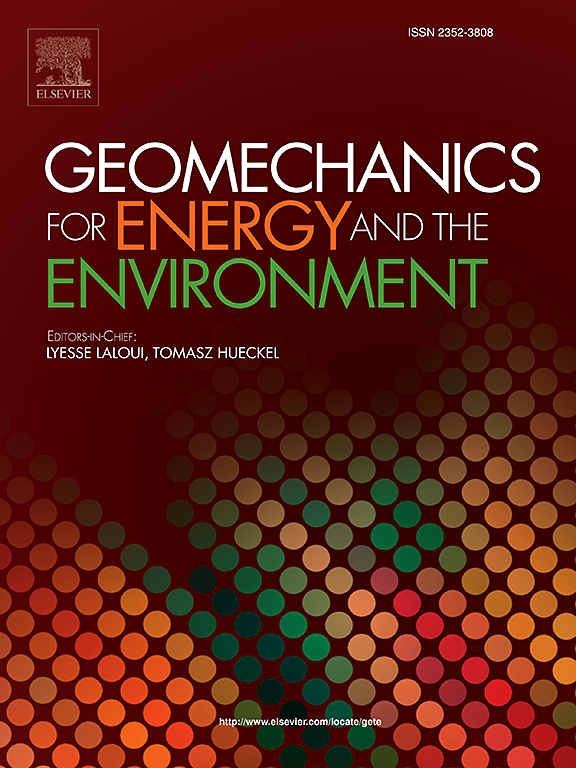Comparing modelling approaches for a generic nuclear waste repository in salt
IF 3.3
2区 工程技术
Q3 ENERGY & FUELS
引用次数: 0
Abstract
This paper contains a comparison of five modelling approaches for a simplified nuclear waste repository in a domal salt formation. It is the result of a four-year collaboration between five international teams on Task F of the DECOVALEX-2023 project on performance assessment modelling. The primary objectives of Task F are to build confidence in the models, methods, and software used for performance assessment (PA) of deep geologic nuclear waste repositories, and/or to bring to the fore additional research and development needed to improve PA methodologies. This work demonstrates how these objectives are accomplished through staged development and comparison of the models and methods used by participating teams in their PA frameworks. Participating teams made a wide range of model assumptions, ranging from compartmentalized networks to full 3D models of the salt formation and repository. Despite differences in the modelling strategies, all models indicate that salt compaction and diffusion of radionuclides in brine are key processes in the repository. For the isothermal spent nuclear fuel and vitrified waste scenario with multiple early failures considered, all models indicate little of the disposed radionuclides will migrate beyond the repository seal over the 100,000-year simulations. In general, the model output quantities have the largest differences over the short term and near the waste. Disparities between the models are believed to be due to differing simplifications from the conceptual model.
盐中核废料储存库的建模方法比较
本文包含了一个简化的圆顶盐地层核废料储存库的五种建模方法的比较。这是五个国际团队就DECOVALEX-2023项目的绩效评估建模任务F进行了四年合作的结果。任务F的主要目标是建立对用于深层地质核废料储存库性能评估(PA)的模型、方法和软件的信心,和/或突出改进PA方法所需的额外研究和开发。这项工作演示了如何通过分阶段开发和比较参与团队在其PA框架中使用的模型和方法来实现这些目标。参与的团队做出了广泛的模型假设,从划分的网络到盐层和储存库的完整3D模型。尽管建模策略有所不同,但所有模型都表明盐压实和放射性核素在盐水中的扩散是储存库中的关键过程。对于考虑多次早期失效的等温乏燃料和玻璃化废物情景,所有模型都表明,在10万年的模拟中,处置的放射性核素很少会迁移到储存库密封之外。一般来说,模型产出量在短期和接近浪费时差异最大。模型之间的差异被认为是由于对概念模型的不同简化。
本文章由计算机程序翻译,如有差异,请以英文原文为准。
求助全文
约1分钟内获得全文
求助全文
来源期刊

Geomechanics for Energy and the Environment
Earth and Planetary Sciences-Geotechnical Engineering and Engineering Geology
CiteScore
5.90
自引率
11.80%
发文量
87
期刊介绍:
The aim of the Journal is to publish research results of the highest quality and of lasting importance on the subject of geomechanics, with the focus on applications to geological energy production and storage, and the interaction of soils and rocks with the natural and engineered environment. Special attention is given to concepts and developments of new energy geotechnologies that comprise intrinsic mechanisms protecting the environment against a potential engineering induced damage, hence warranting sustainable usage of energy resources.
The scope of the journal is broad, including fundamental concepts in geomechanics and mechanics of porous media, the experiments and analysis of novel phenomena and applications. Of special interest are issues resulting from coupling of particular physics, chemistry and biology of external forcings, as well as of pore fluid/gas and minerals to the solid mechanics of the medium skeleton and pore fluid mechanics. The multi-scale and inter-scale interactions between the phenomena and the behavior representations are also of particular interest. Contributions to general theoretical approach to these issues, but of potential reference to geomechanics in its context of energy and the environment are also most welcome.
 求助内容:
求助内容: 应助结果提醒方式:
应助结果提醒方式:


